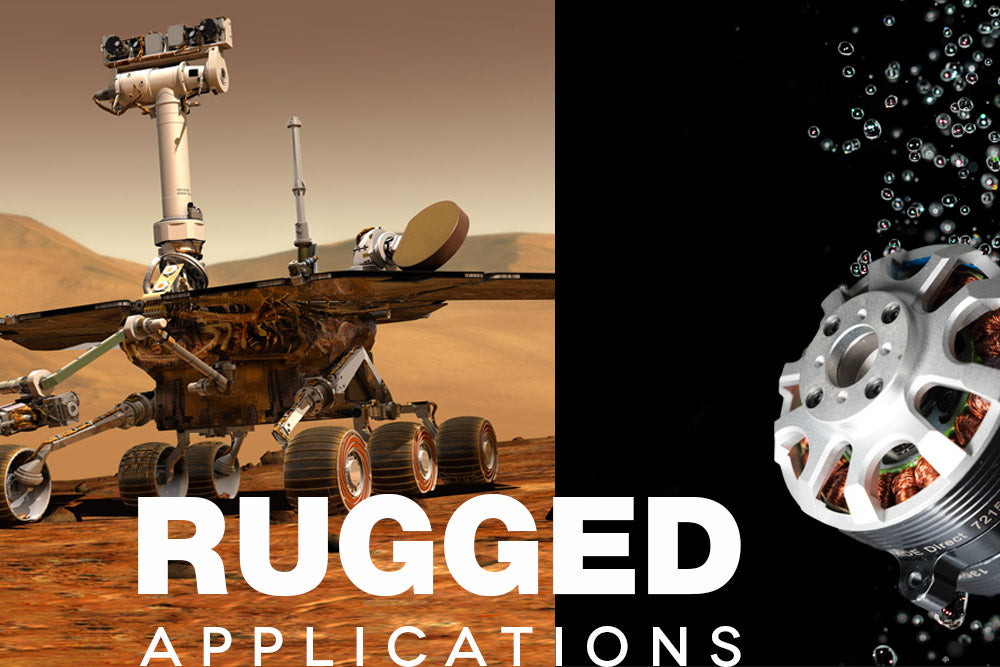The Future of Brushless DC Motors in Aerospace

Resistant to harsh elements and shocks, the compact and durable design of brushless DC motors makes them ideal for aerospace applications, from powering rovers to drones. That’s why NASA has been using brushless motors in their aerospace missions for over 50 years. Take a look at NASA’s rich history with brushless motors and get a sneak peek at what’s coming in the next few years!
The Origin of NASA’s Brushless DC Motors
NASA started developing brushless motor prototypes in the early 1960s. America's space agency issued technology briefs designed to summarize specific innovations derived from America’s space program to encourage their commercial applications. All the way back in August of 1966, NASA issued a tech brief on brushless DC motors. In Brief 66-10355, NASA expresses that the brush life of conventional carbon brush commutators lasts mere minutes when operated in a vacuum. NASA also offers up a solution: development of a new brushless DC motor with “true DC motor characteristics.” They go on to state that a brushless DC motor, with its excellent response time and high efficiency, has considerable potential for the servomechanism field.
Eight years later in 1974, brushless motors qualified as the prime movers for the Apollo spacecraft’s life support blowers and for circulating oxygen in the Lunar Portable Life Support System after extensive prototype development and testing. NASA’s 45-page research paper on brushless motors explains that they were able to meet critical manned space program requirements that brushed motors could not with non-sparking characteristics for use in pure oxygen, high efficiency, high starting torque, long life, and good speed regulation.
The Near Future of Brushless DC Motors in Aerospace
NASA is in the planning process of its Mars 2020 mission, following the success of the Curiosity rover. The Mars 2020 mission addresses NASA’s high-priority goals for Mars exploration, including questions about the potential for life on Mars. The mission aims to seek out signs of habitable conditions on Mars in the past while searching for signs of past microbial life itself.
The Mars 2020 rover will be introducing a drill able to collect core samples of Martian rocks and soils and set them aside so that a future mission could potentially return these samples to Earth. This drill will likely be powered by brushless DC motors, as they have a significantly longer lifespan in space and require less maintenance than motors that rely on carbon brushes.
When NASA’s next rover heads to Mars in two years, it’s likely that it will be accompanied by a drone to help expand our understanding of the planet’s landscape. NASA has been testing a lightweight UAV designed to fly on Mars for their upcoming 2020 mission. In the last few months, their trials have produced encouraging results. NASA officials expect to decide within the year whether an aerial drone will join their next rover on Mars.
Drones can glide into tight areas that a rover would be unable to reach, and a rugged, solar-powered drone could triple the distance that a rover could travel in a day. Keeping drones in the sky on Mars would be easier than on Earth, since the red planet only has 38% of Earth’s gravity, enabling longer flight time.
Brushless DC Motors for Aerospace and Defense
NASA researchers agree that brushless motors are better able to survive the extreme environmental conditions of space than their brushed counterparts, enabling them to meet critical mission performance requirements. With maintenance-free operation spanning up to 10 years, brushless DC motors are used for space exploration, satellites, flights, and beyond.
KDE Direct’s brushless motors have been designed to provide market-leading performance with thousands of hours of maintenance-free usage. Our team has also implemented ISO 9001 certification for our production facilities around the world. All KDE Direct products are RoHS (The Restriction of Hazardous Substances), WEEE (The Waste Electrical and Electronic Equipment Directive), and CE (European Conformity) compliant for commercial and industrial applications.
Share this post
- Tags: aerospace news, brushless dc motors, brushless dc motors for aerospace, brushless motors for aerospace, brushless motors nasa, brushless motors news, nasa




